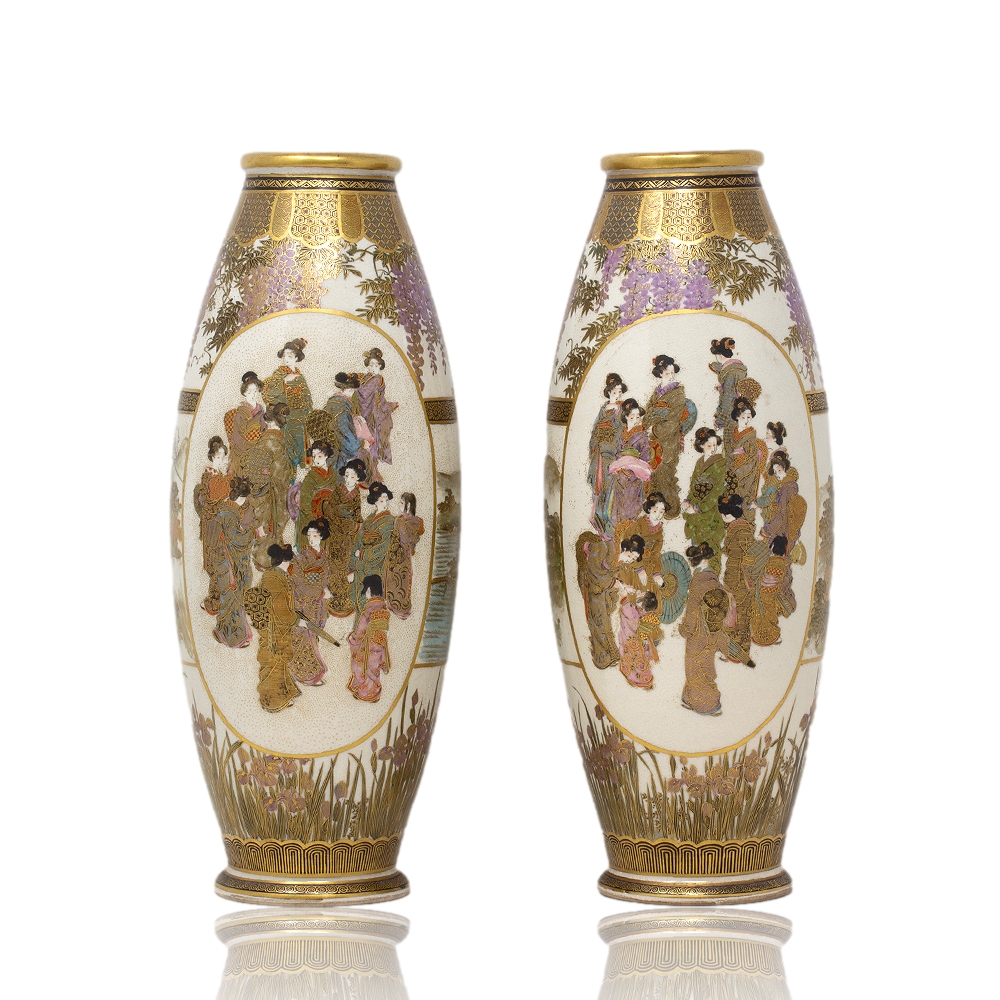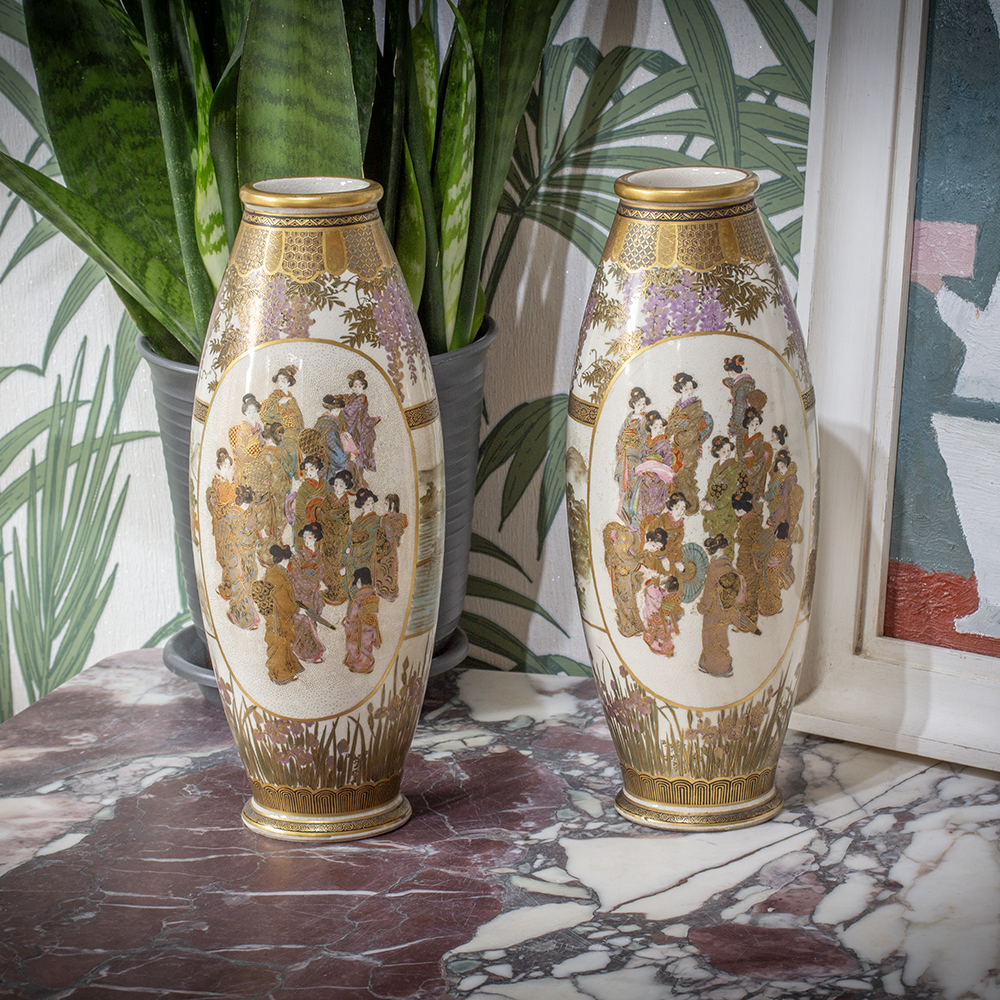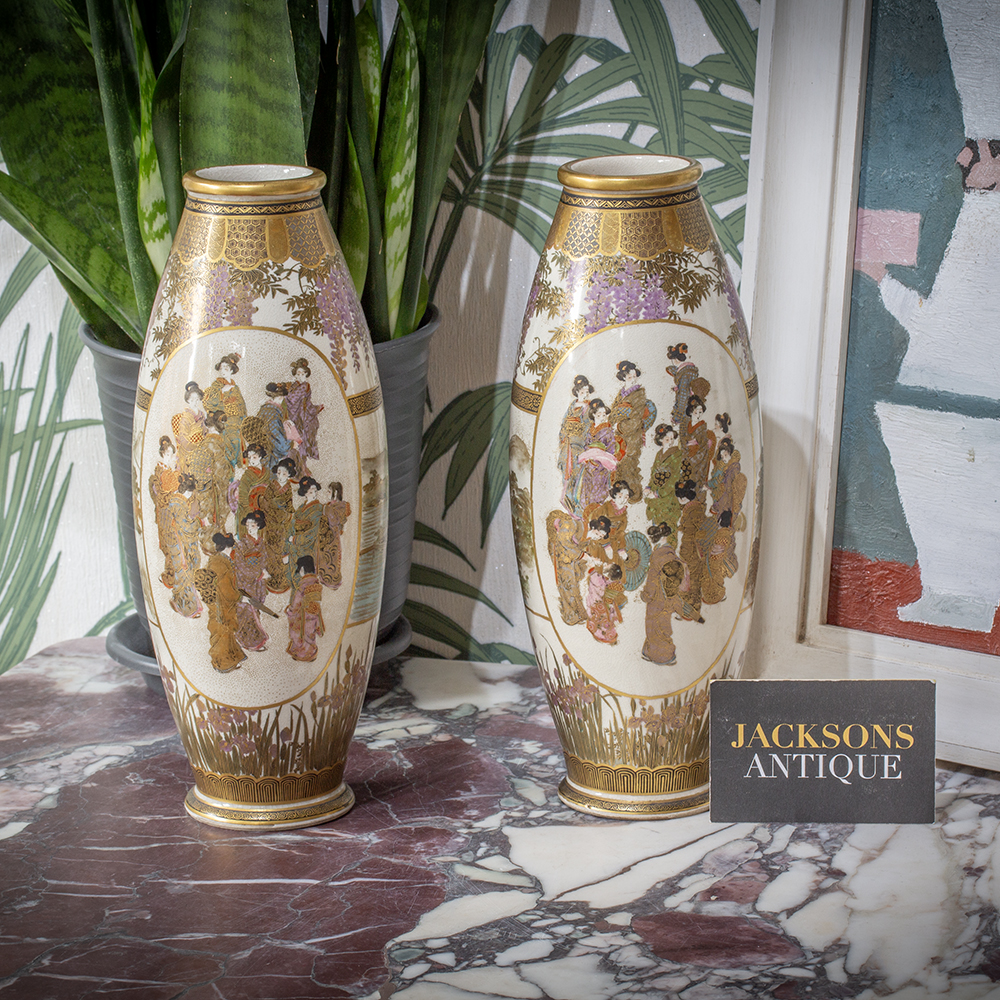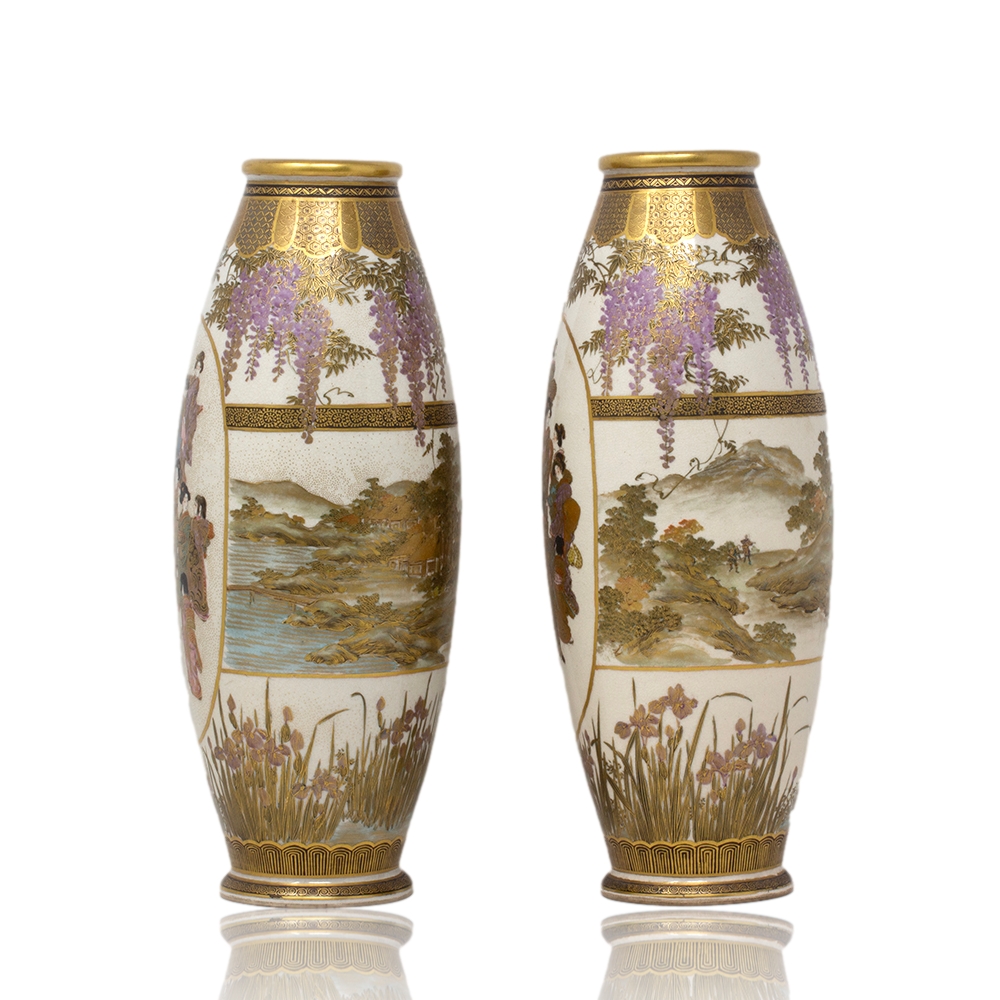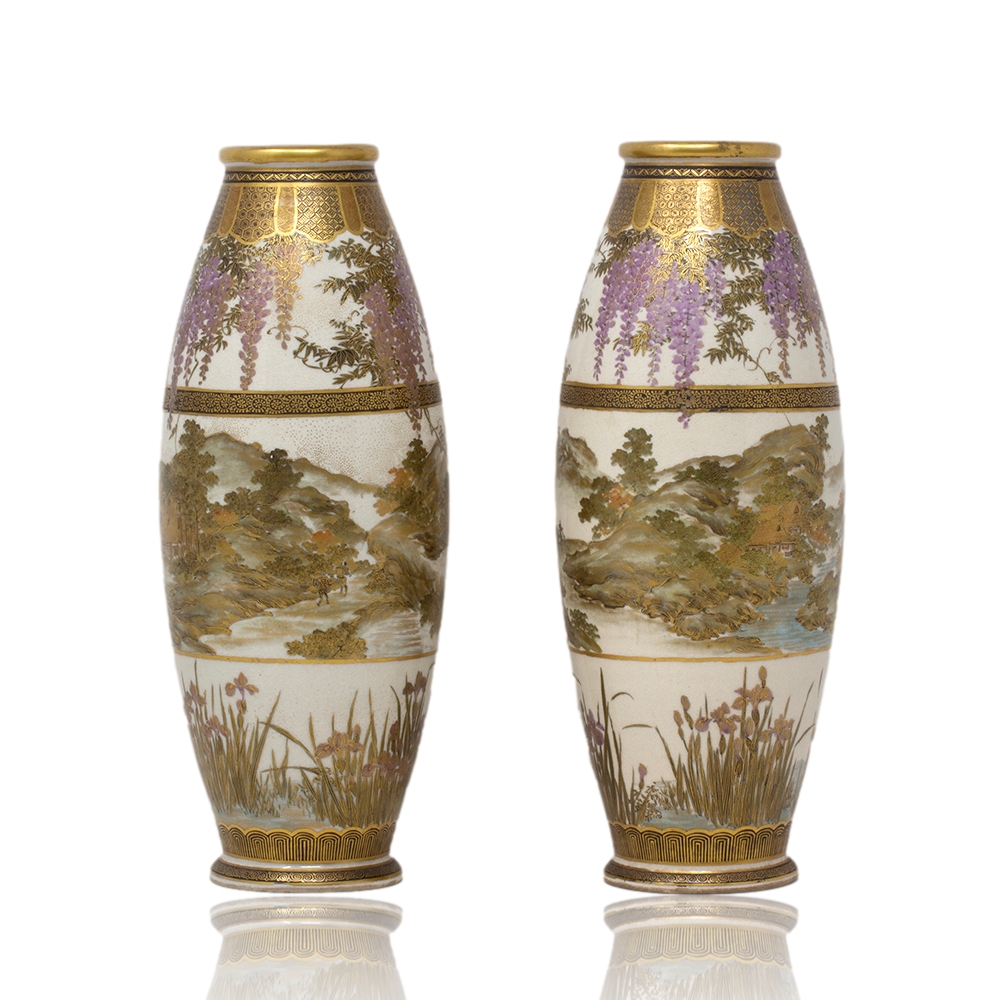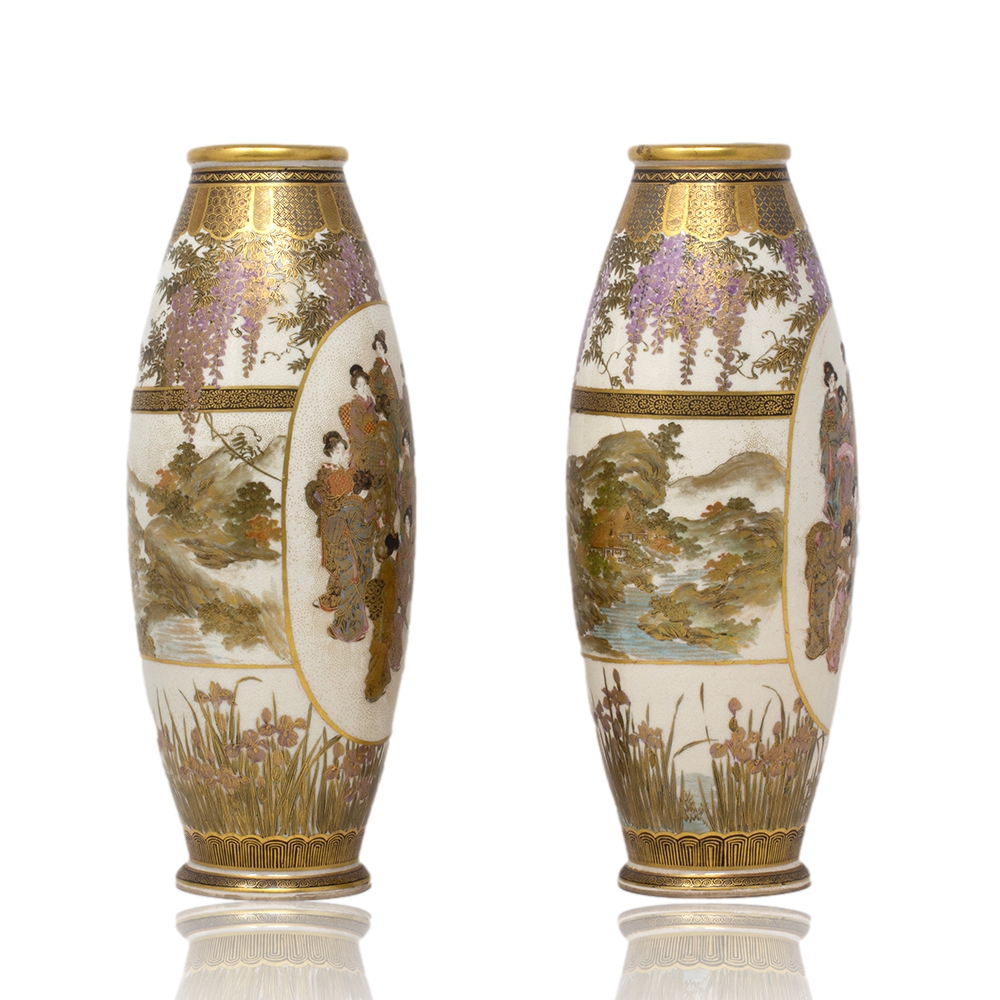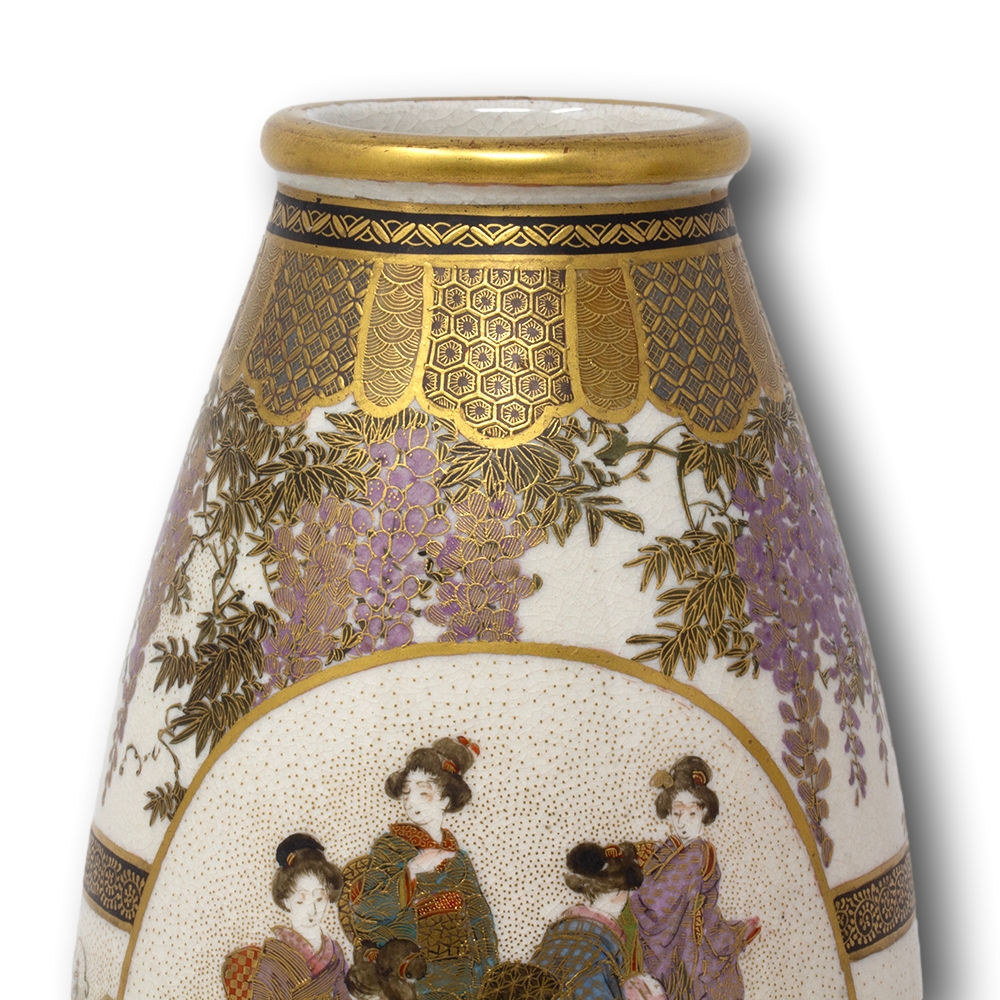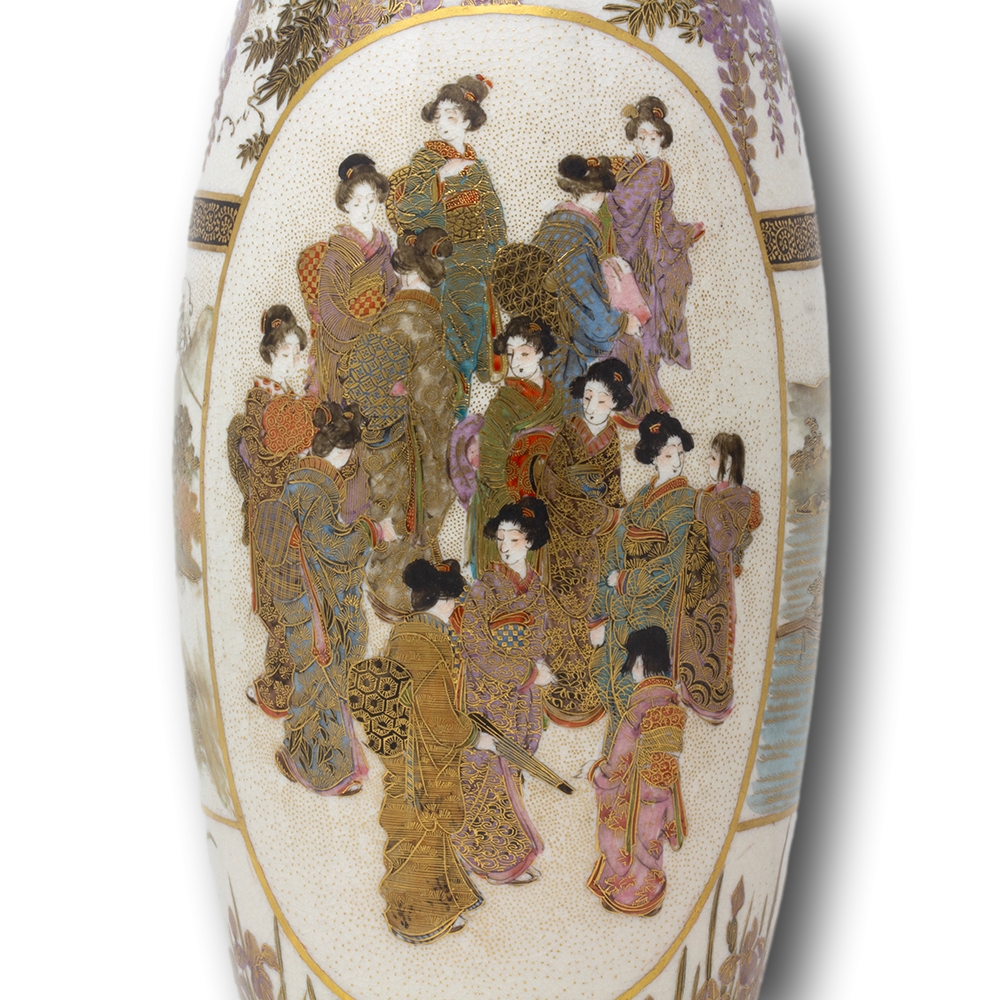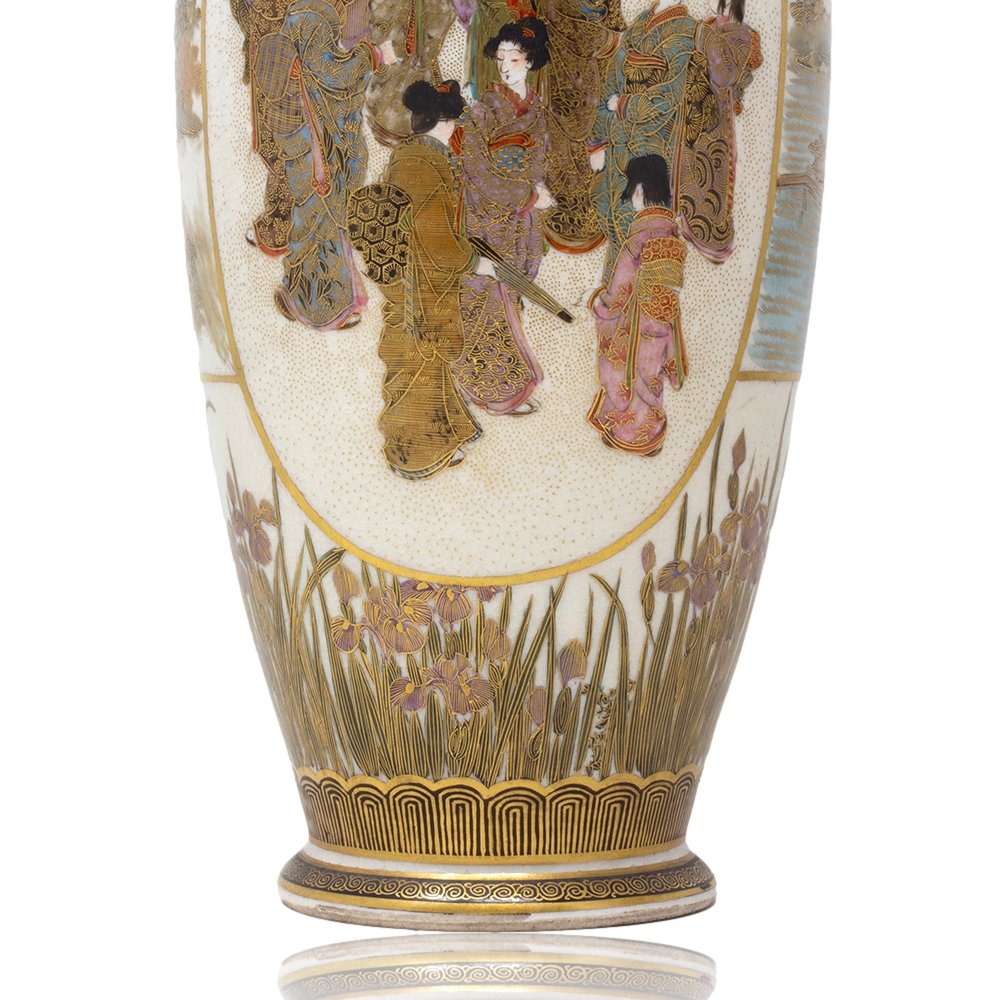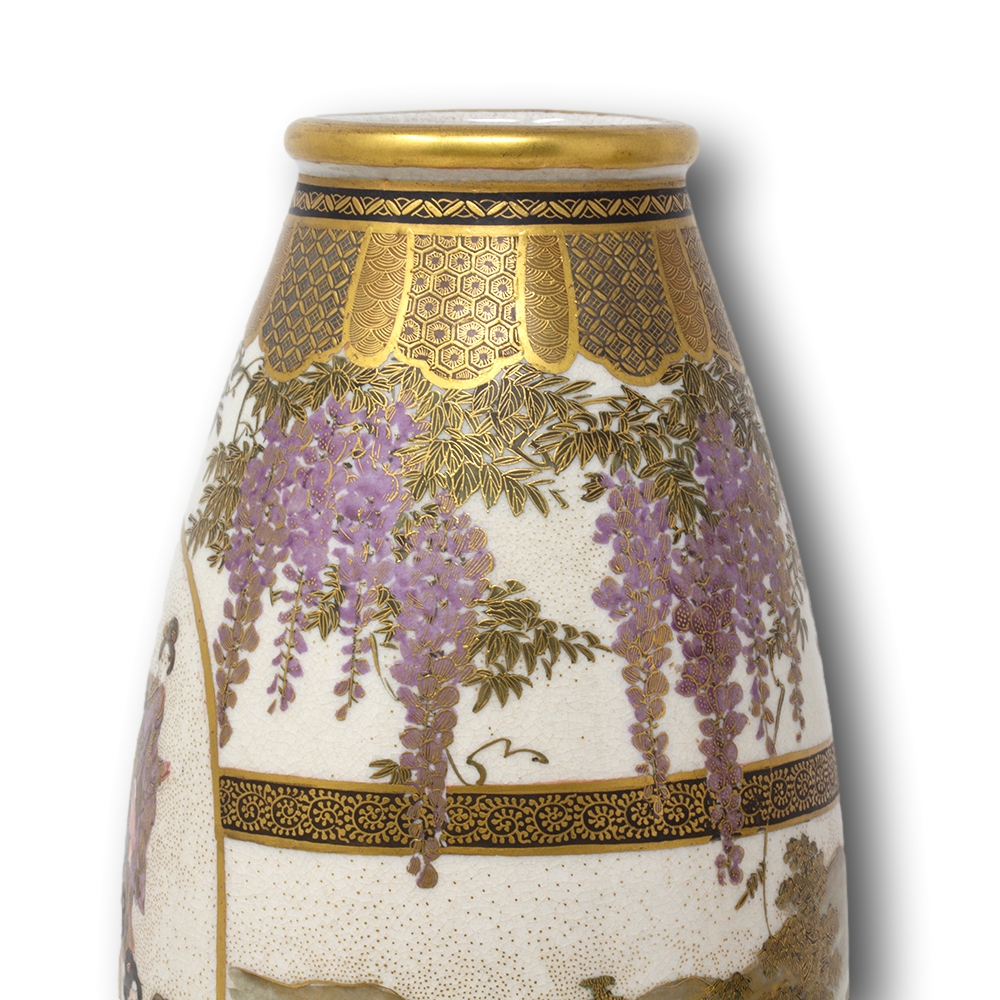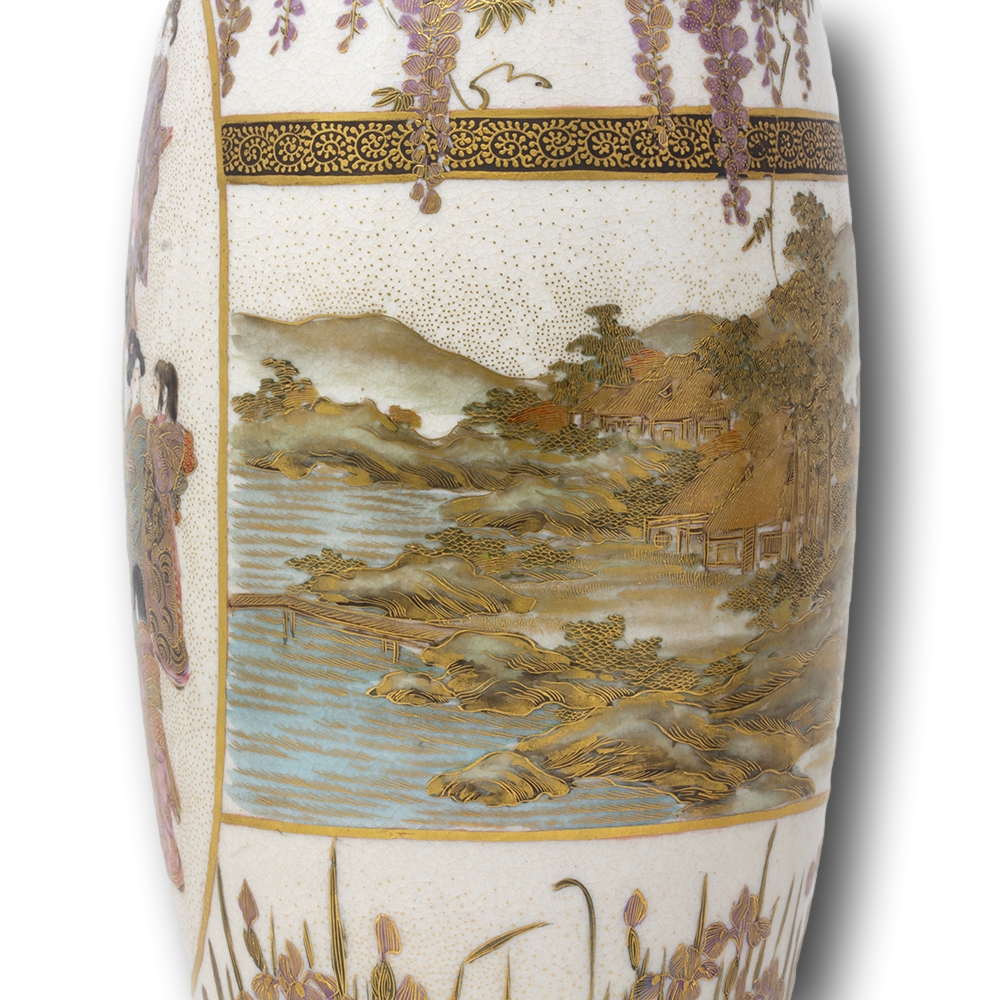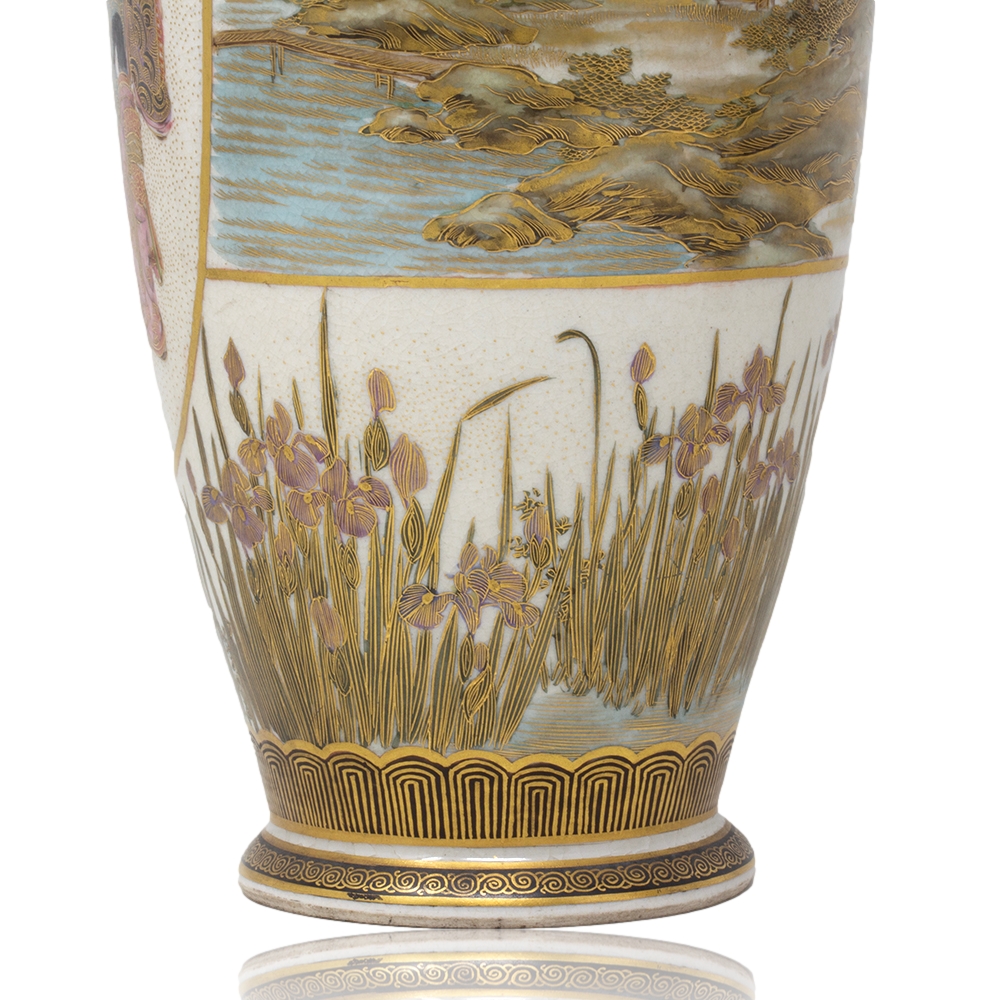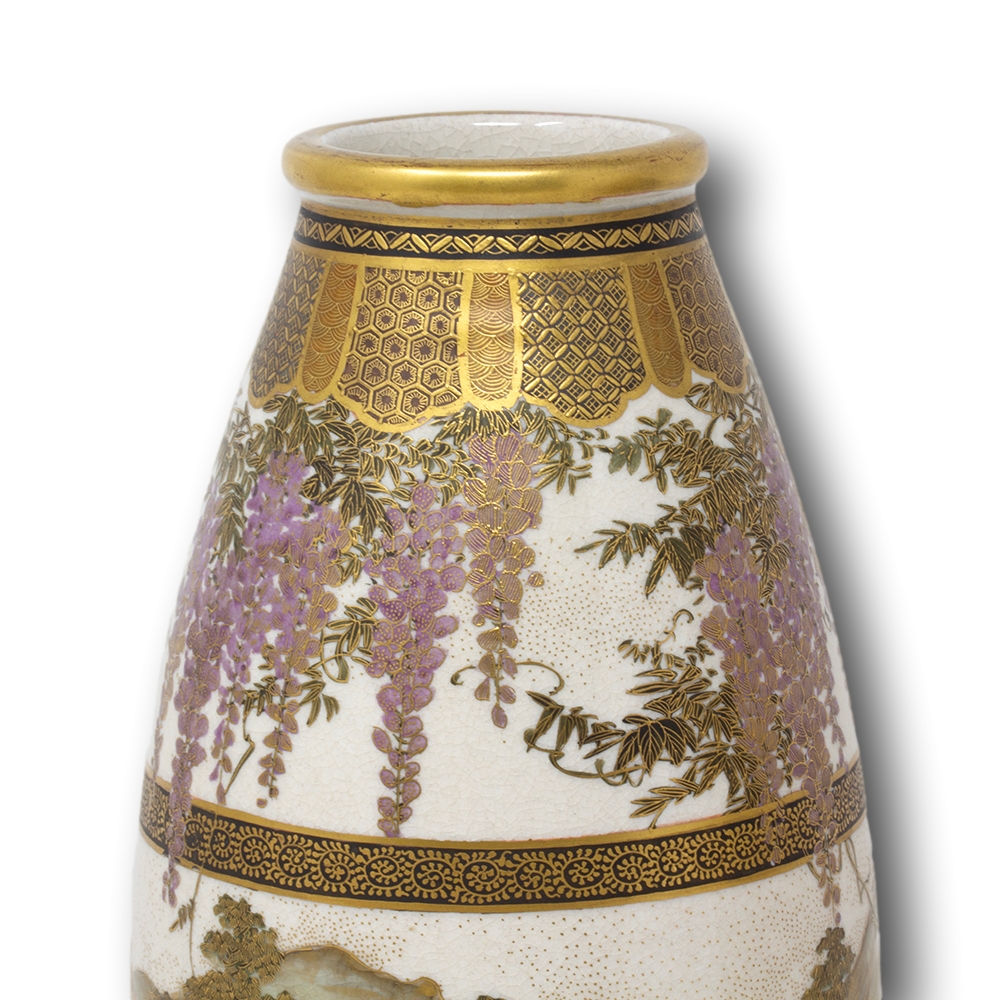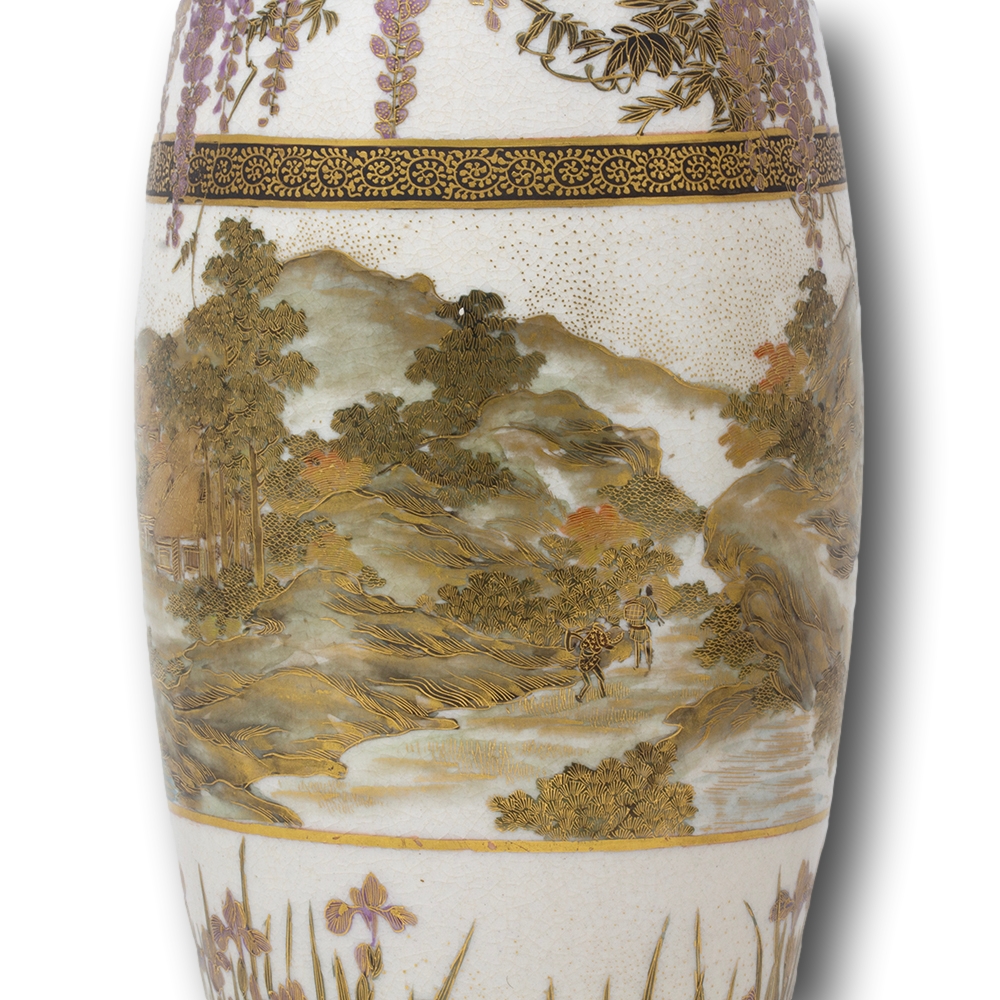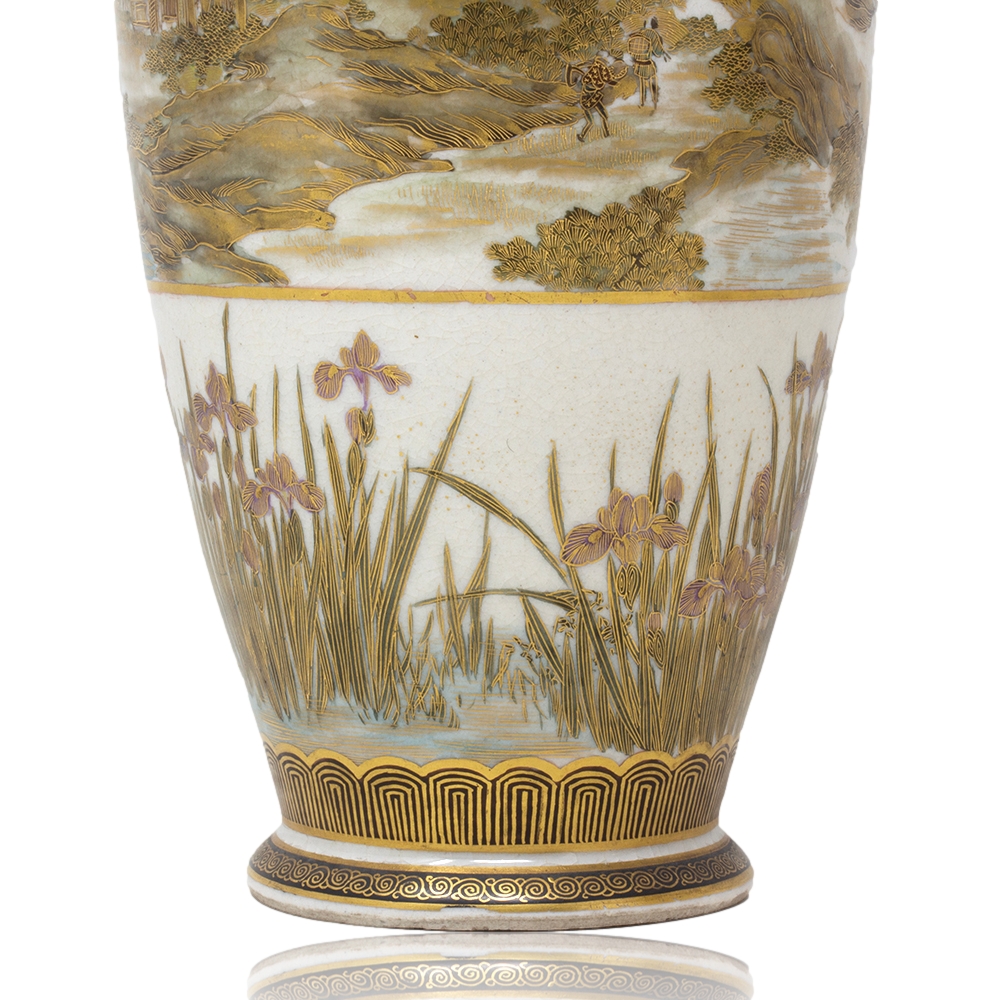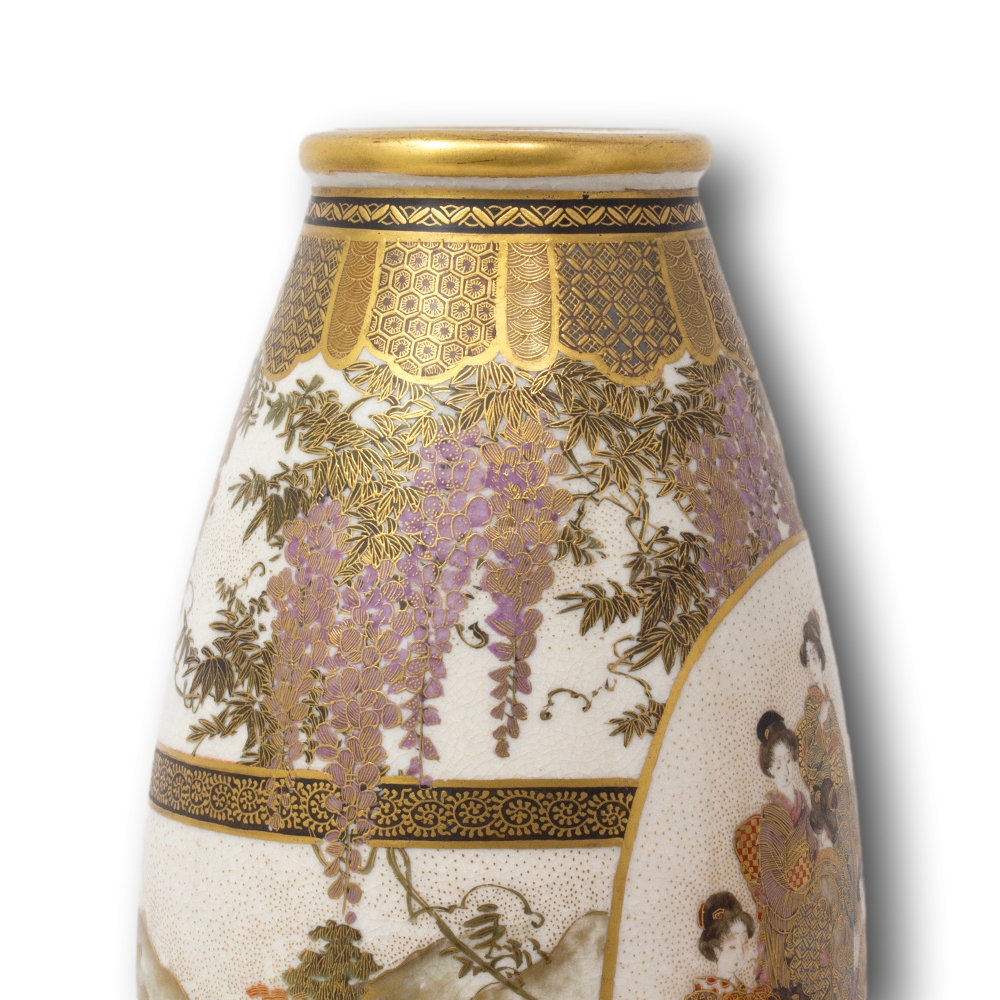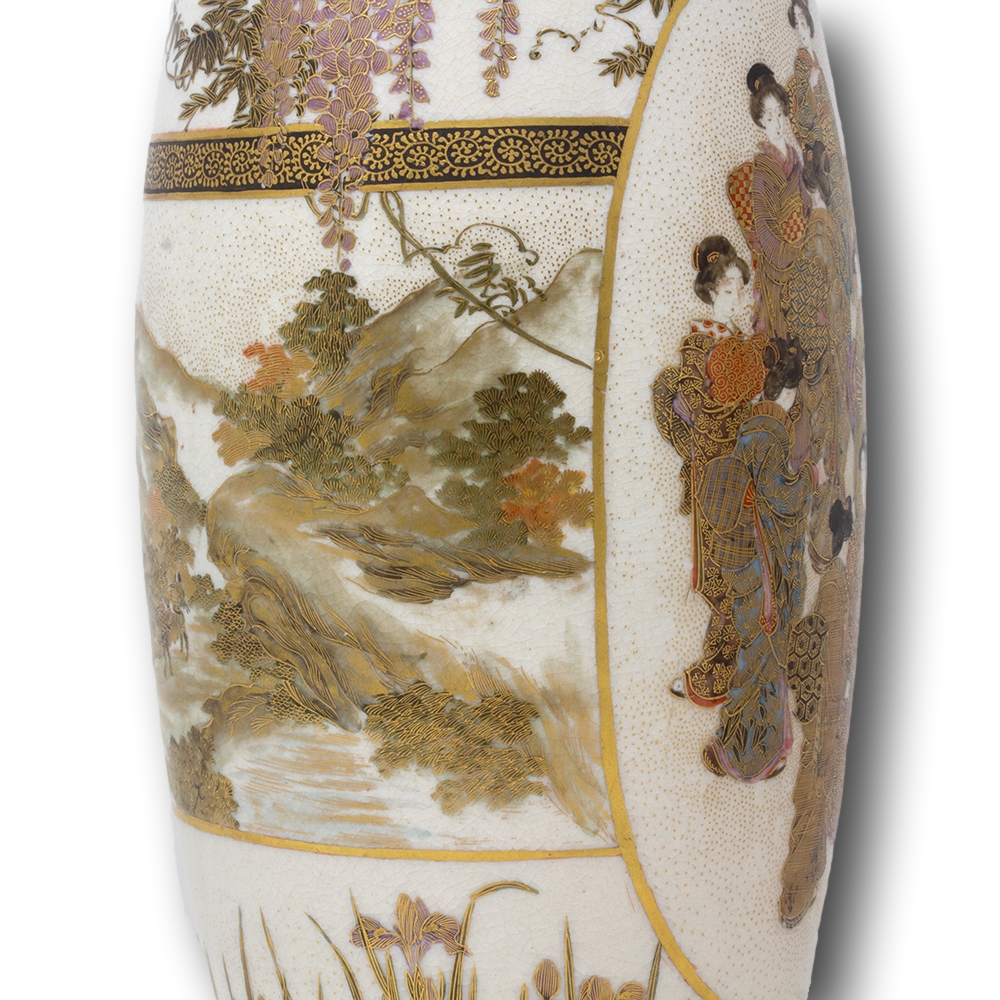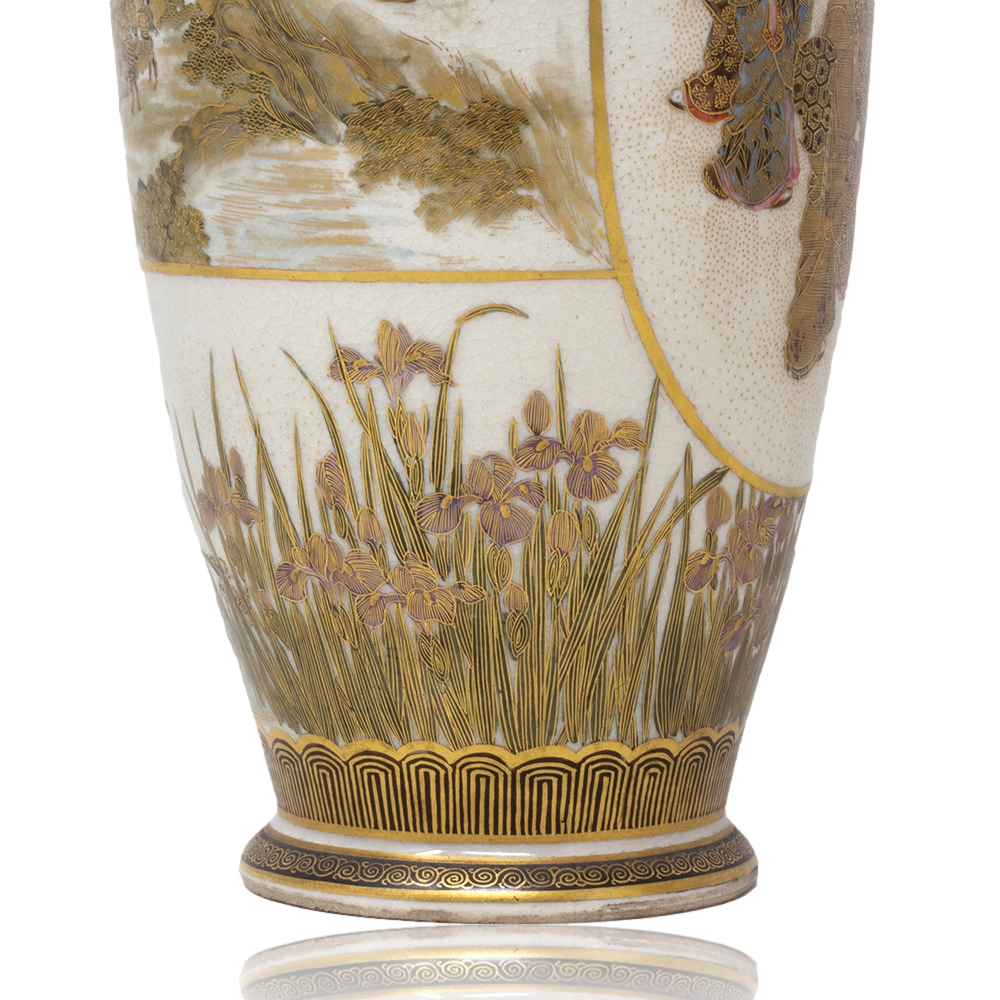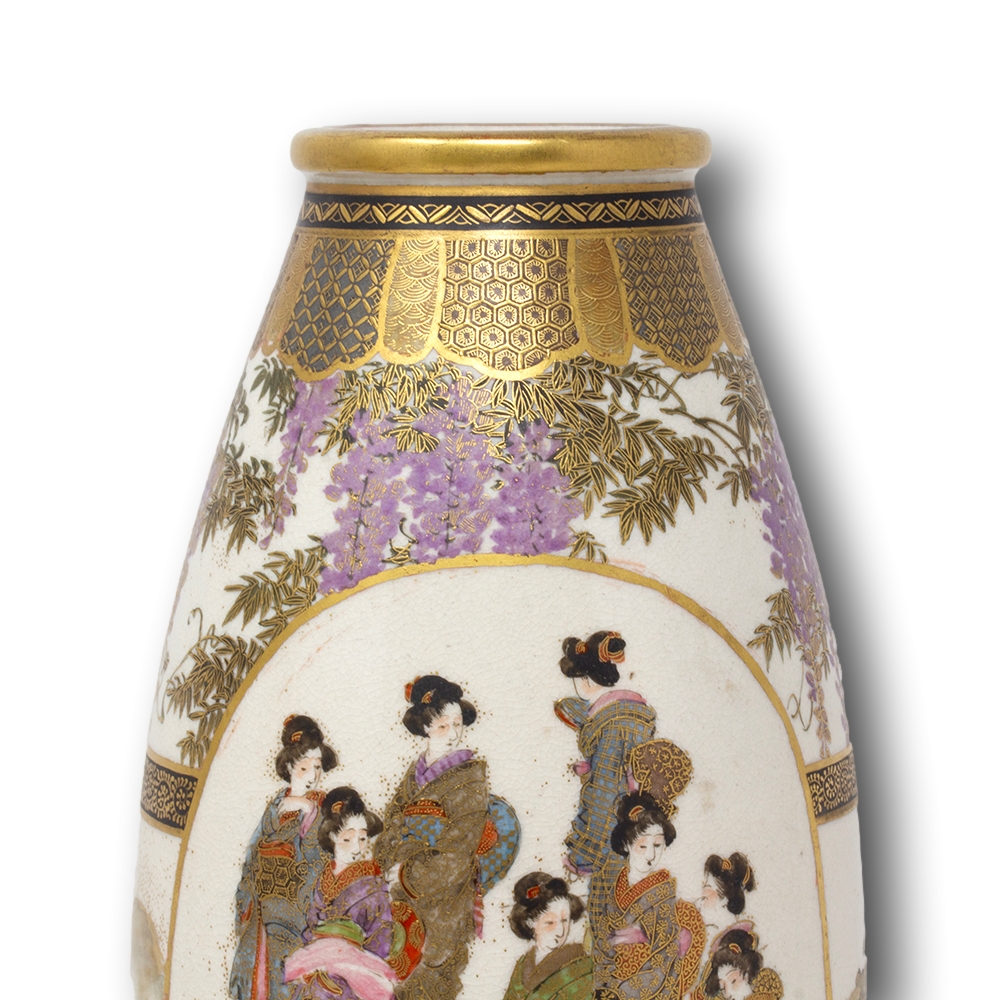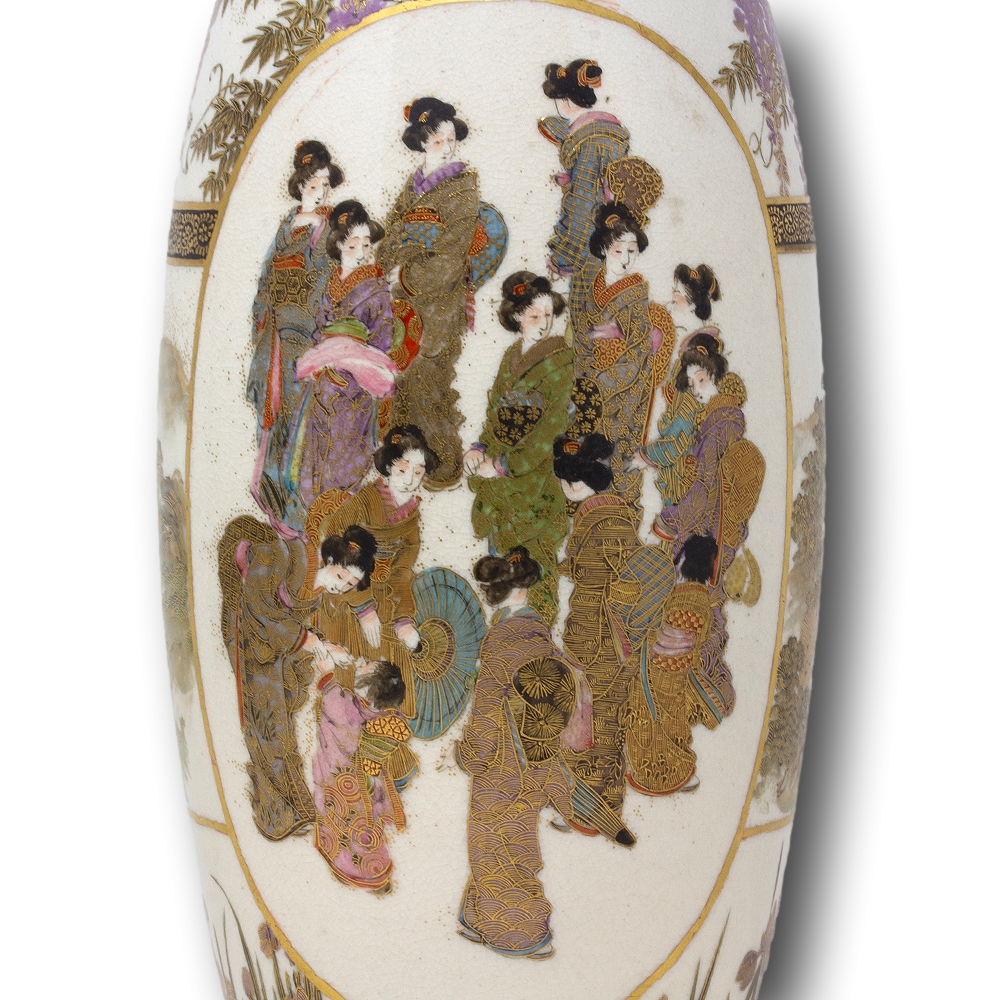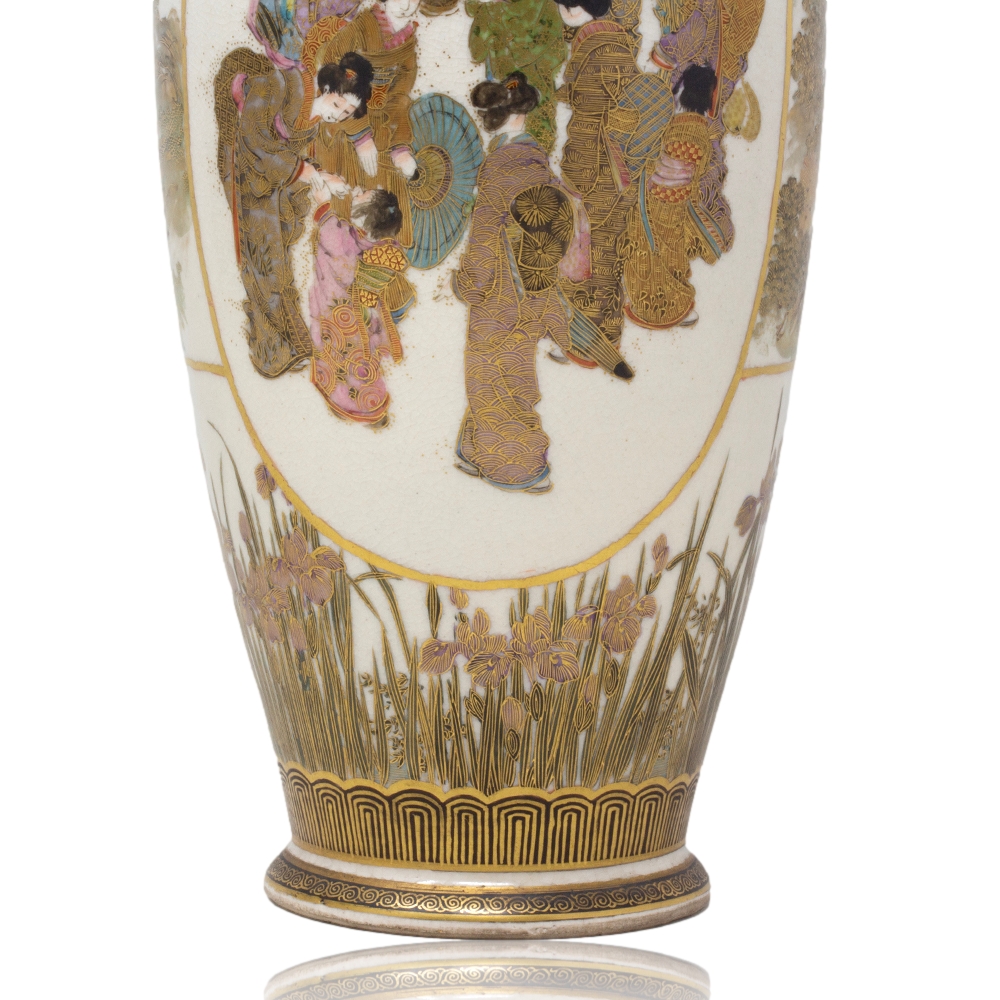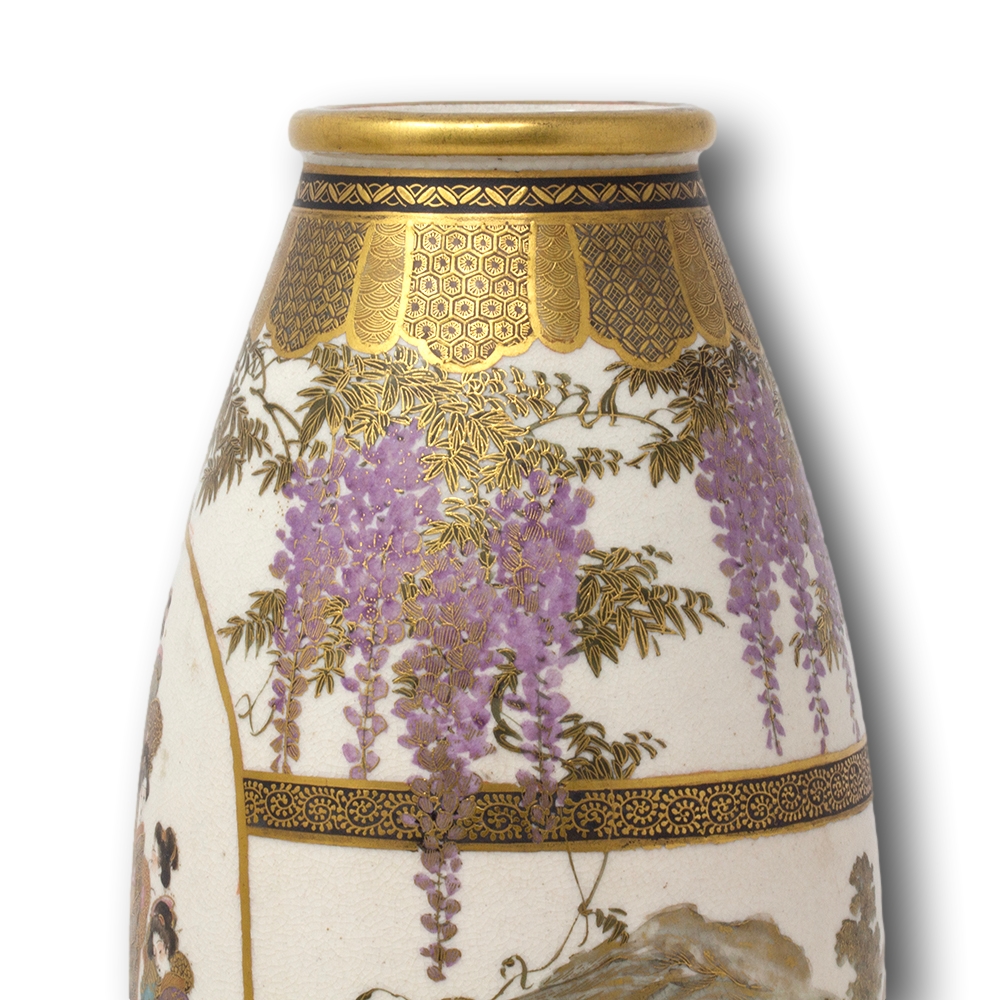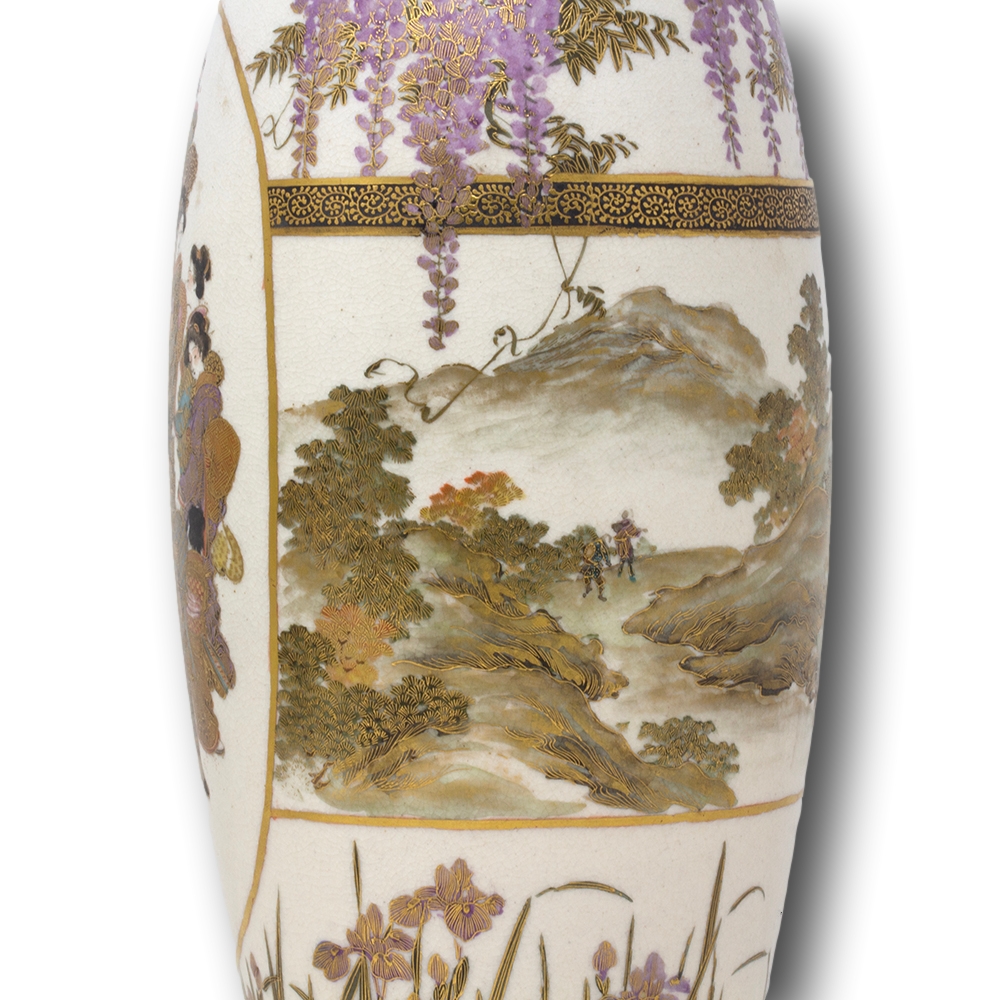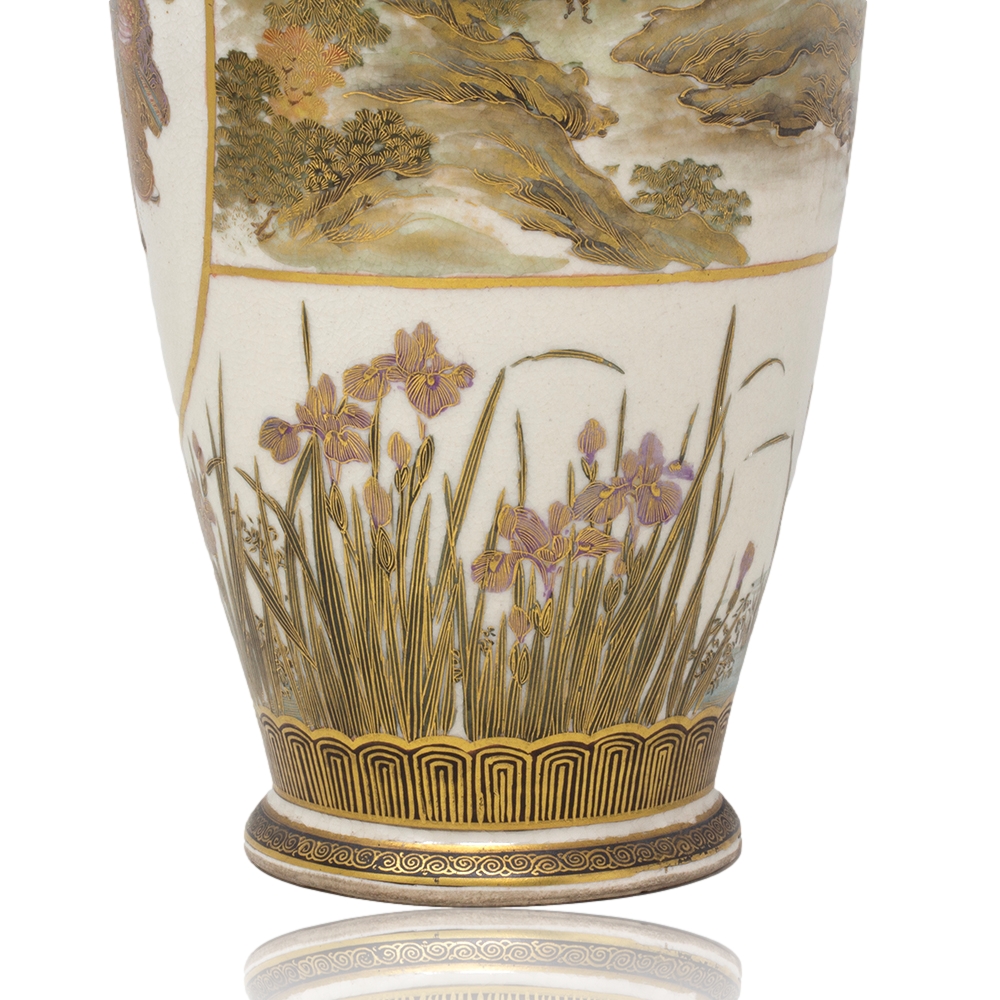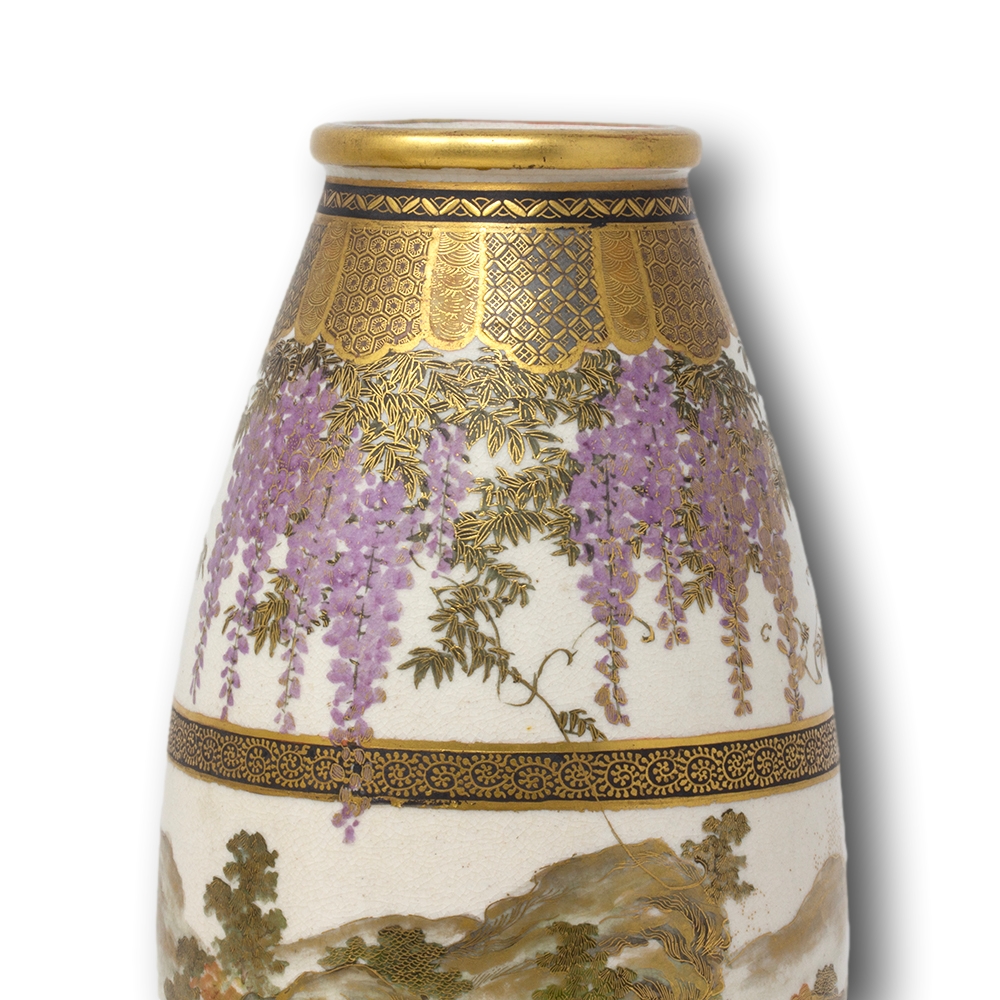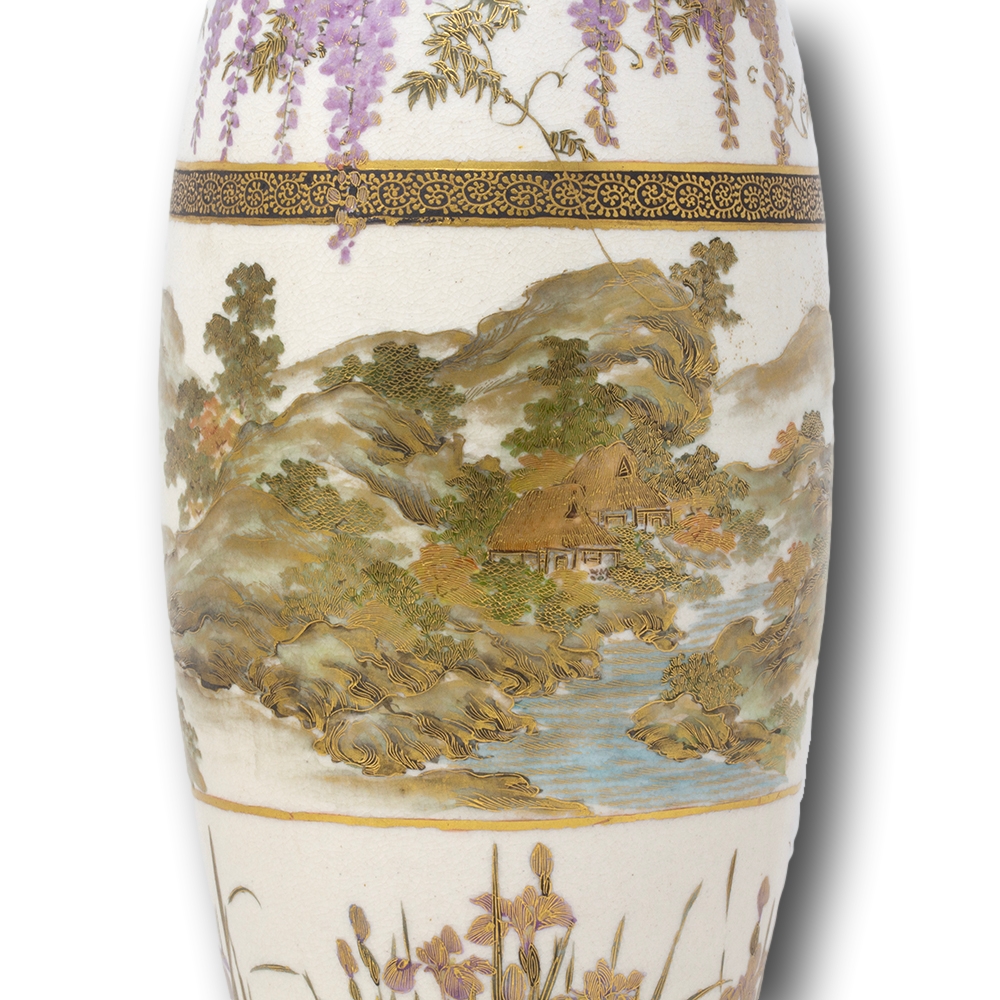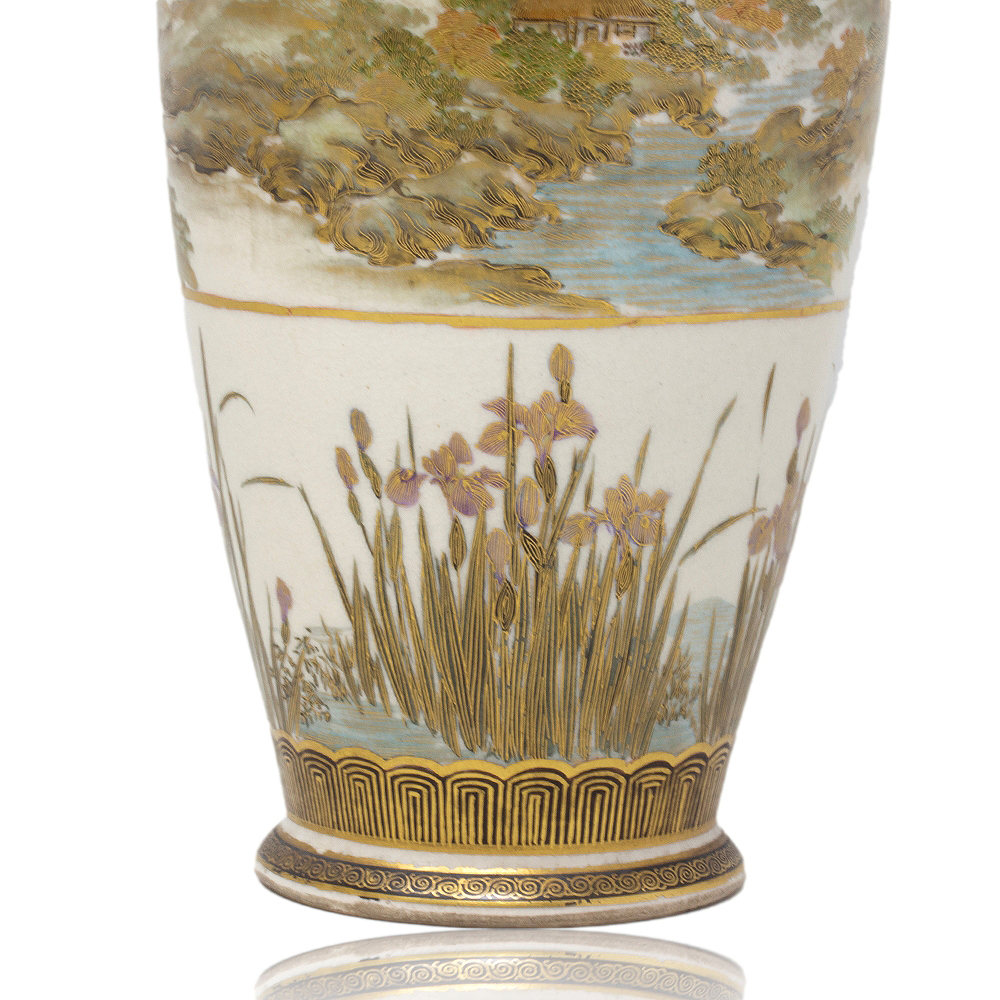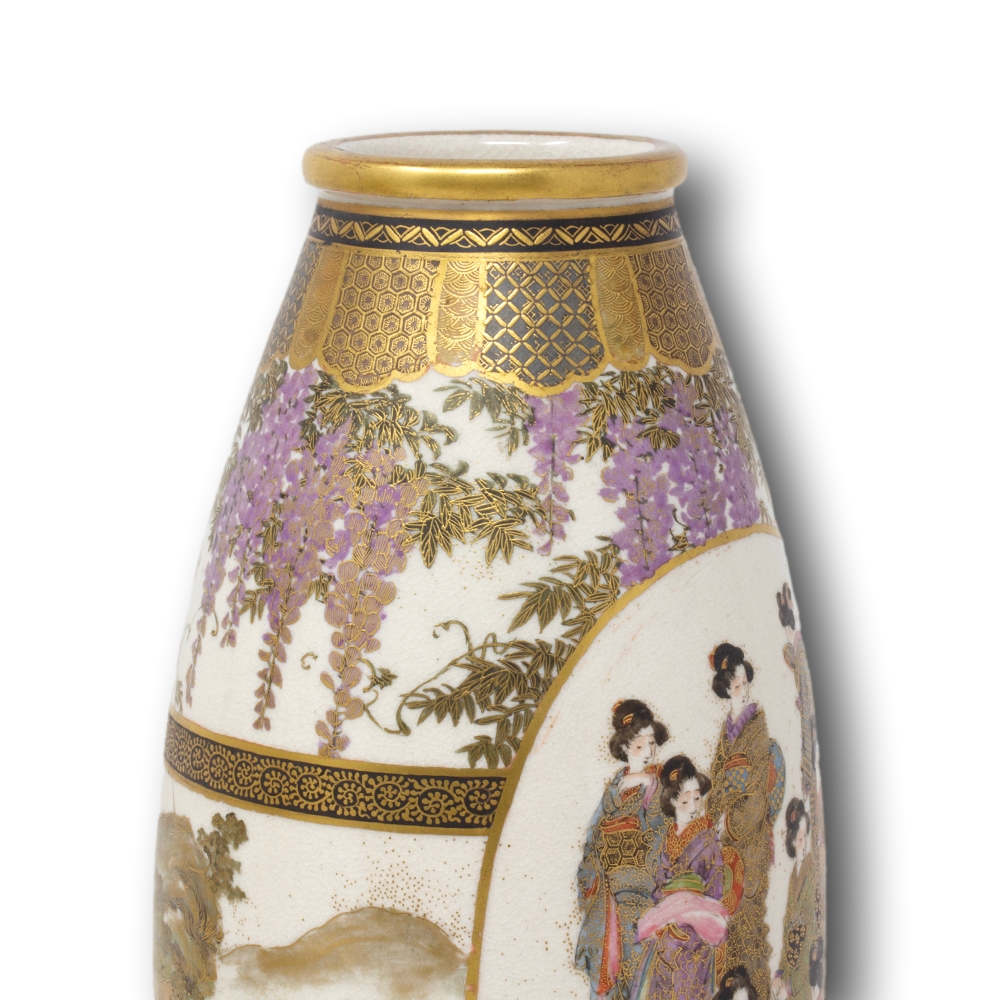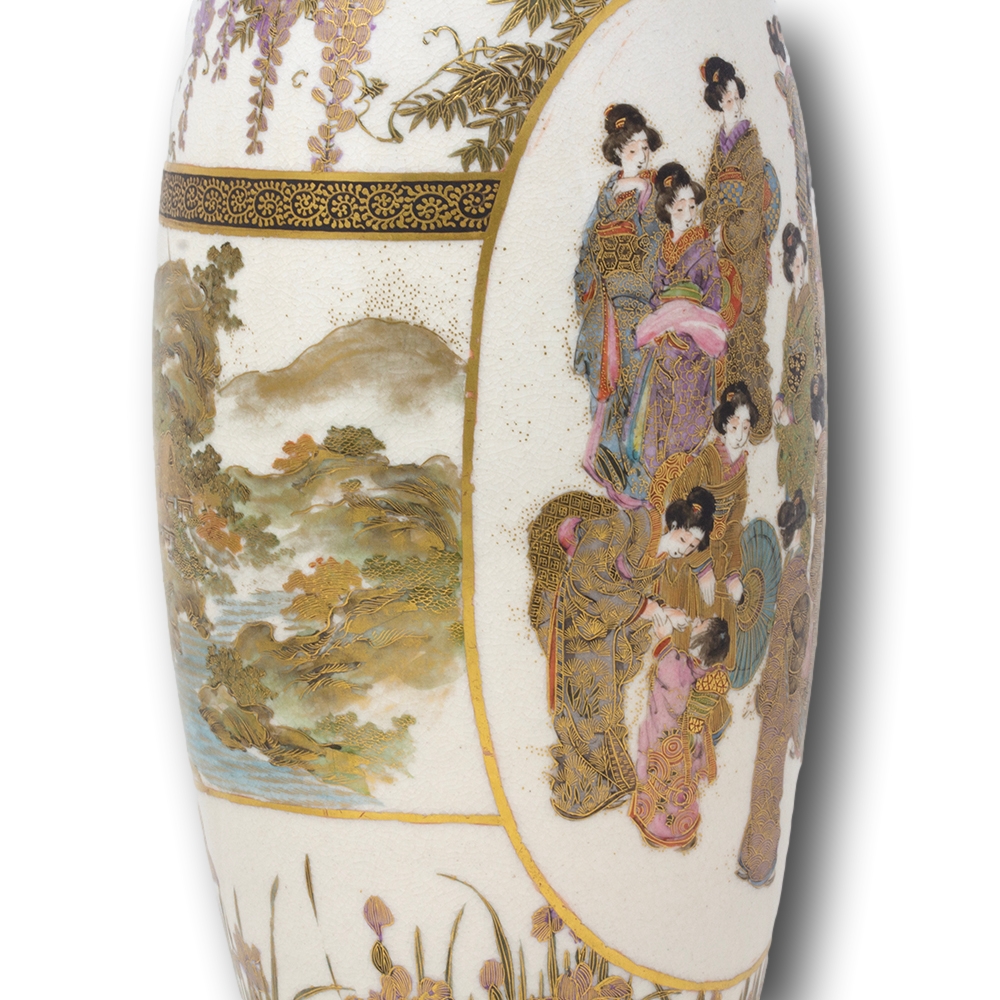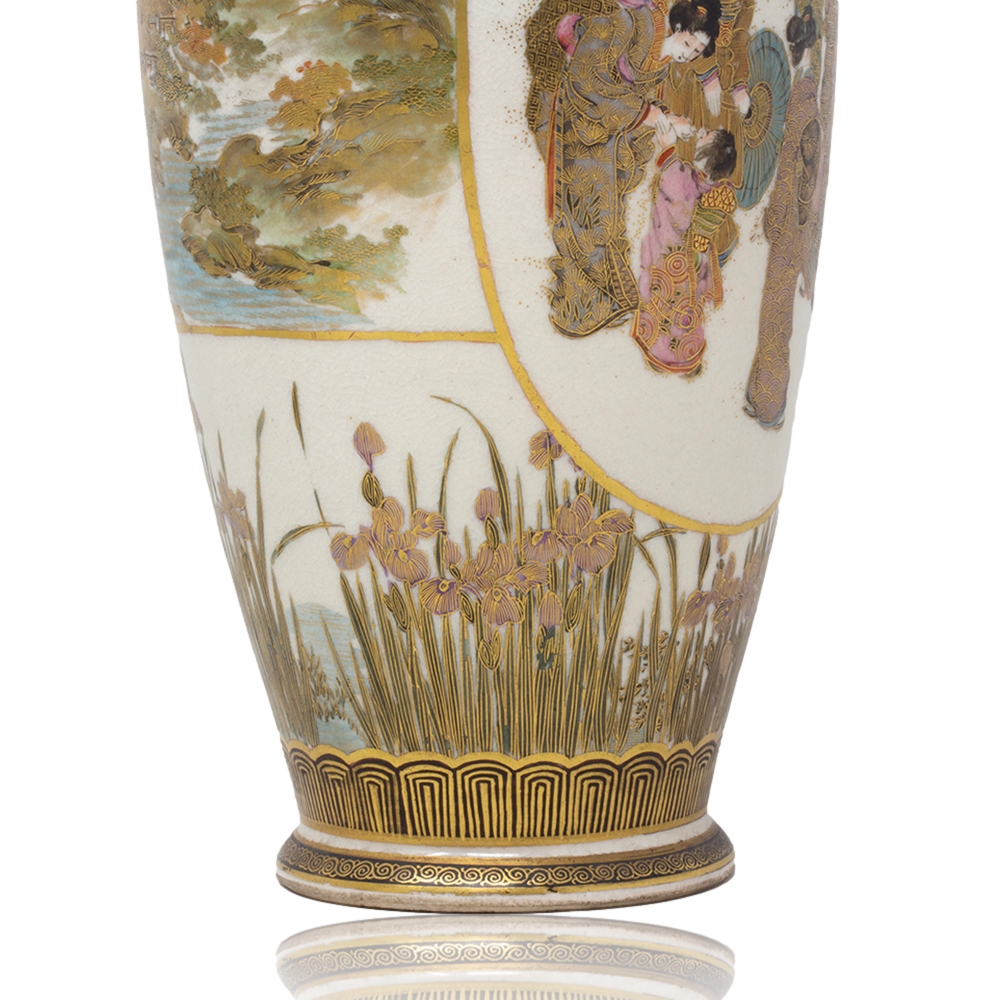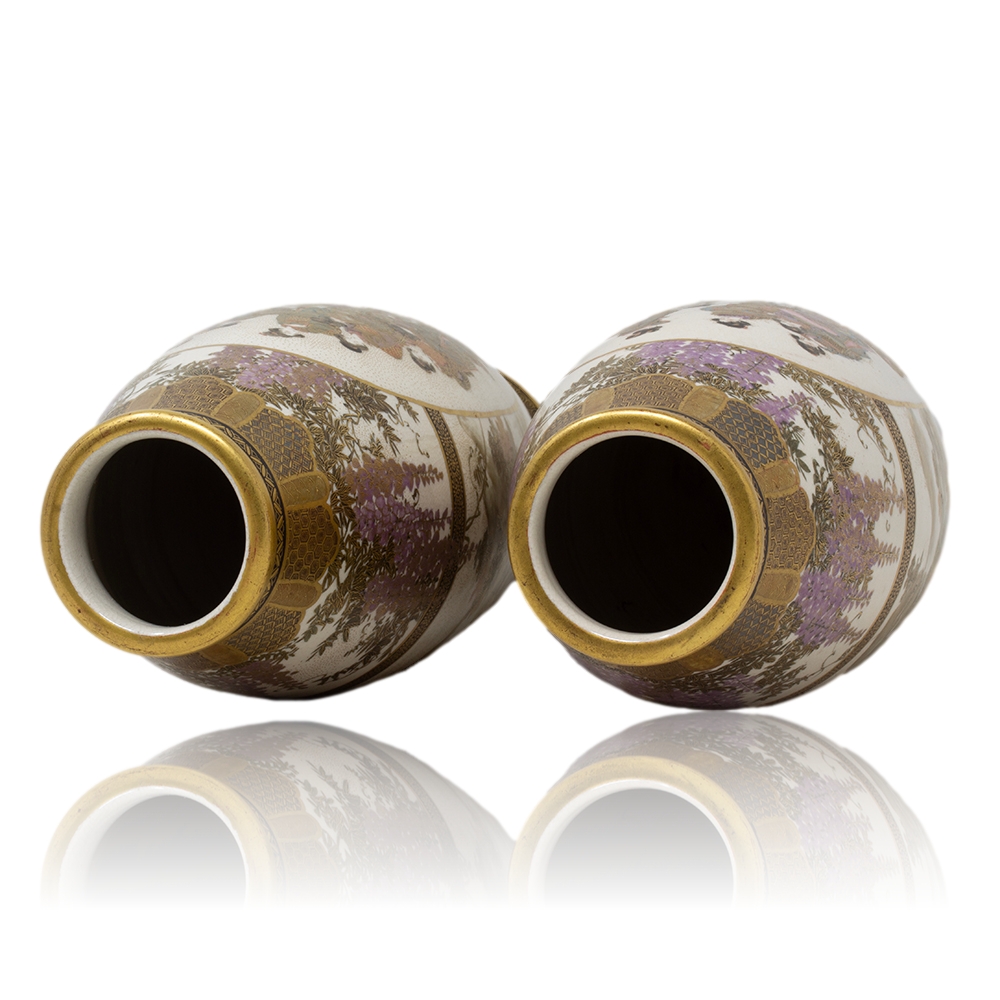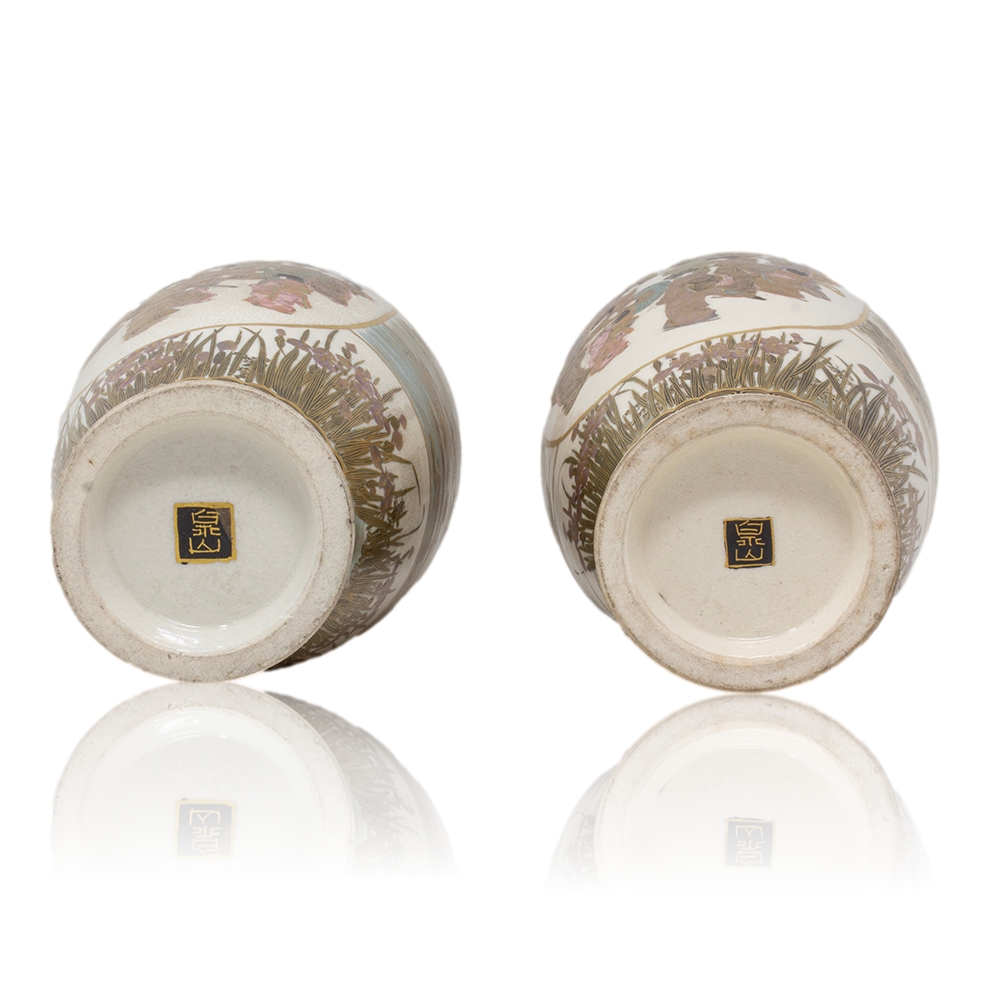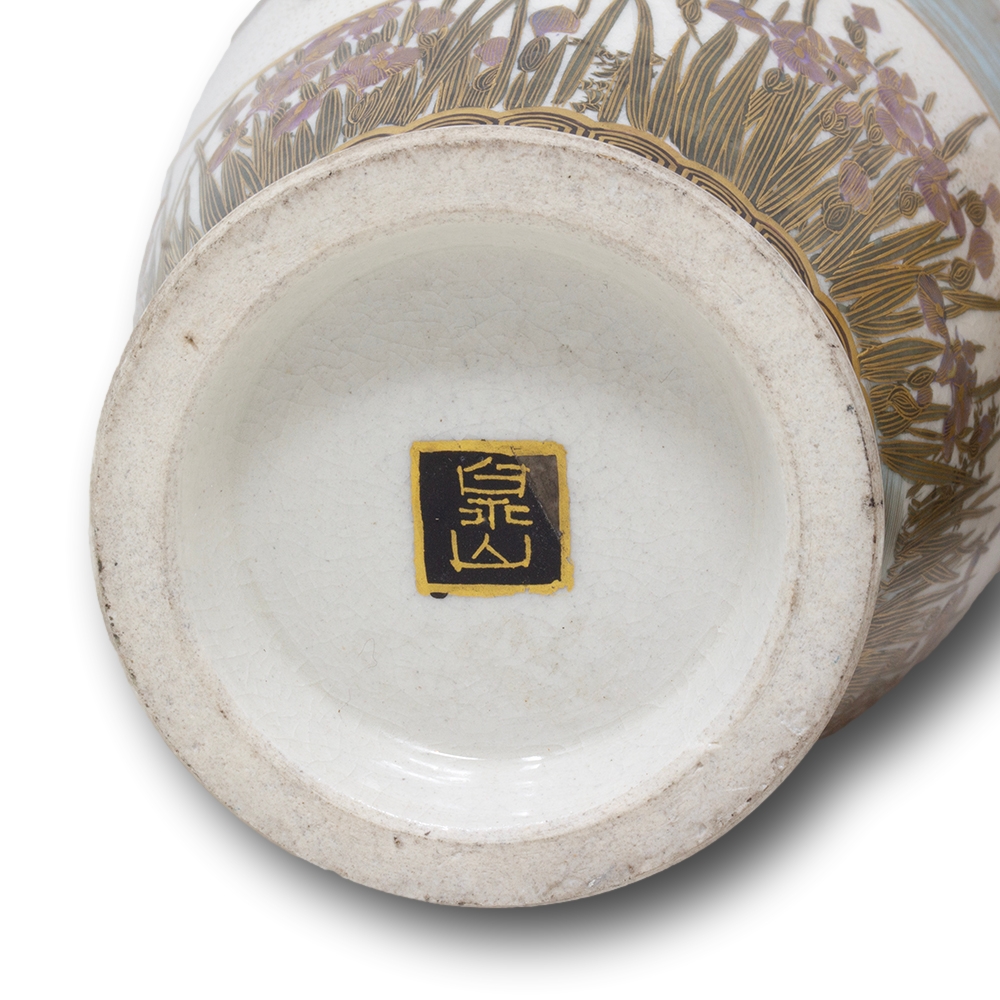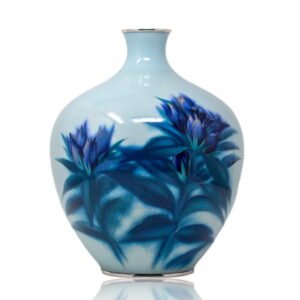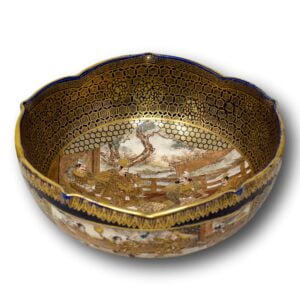Description
Meiji Period (1868-1912)
From our Japanese Satsuma collection, we’re pleased to offer this unusually shaped pair of Japanese Satsuma vases, signed by the artist Senzan 泉山 and dating to the Meiji Period (1868–1912). Each vase is potted in earthenware in a subtle ovoid form, with a circular rolled rim and a flared round base. The entire surface is beautifully hand-painted in continuous bands, separated by black and gold borders with scrolling foliage and fine gilt pin striping.
The decoration unfolds in three distinct layers, a band of trailing wisteria near the top, a wide central scene of mountainous landscapes highlighted with touches of gold and a lower section filled with blooming iris flowers. At the centre of each vase sits a large oval cartouche featuring multiple bijin (elegant women) in various poses, a classic subject in Satsuma ware. The contrast between soft florals and the finely detailed figures creates a strong visual balance across each piece. Both vases are signed Senzan 泉山 in gilt calligraphy on a black reserve at the base.
A beautiful pair from the turn of the 20th century, richly decorated, finely made, and a wonderful example of Meiji period Satsuma pottery.
MEIJI PERIOD (1868-1912)
The Meiji era marked Japan’s transformation into a modern nation and a golden age of decorative arts. With the end of samurai rule and Japan’s opening to the West, artisans produced works of exceptional quality for both domestic and international audiences. Supported by the government through world fairs and Imperial commissions, Japanese lacquerware, cloisonné, satsuma ceramics, bronzes, and ivory carvings reached collectors worldwide. Many leading artists of the time, including Makuzu Kozan and Namikawa Yasuyuki, were honoured as Imperial Household Artists, ensuring the Meiji period remains one of the most celebrated eras of Japanese art.
For further information please see our article Japanese Meiji Period: Art, Collecting, and Cultural Transformation.
SATSUMA WARE
Satsuma ware originated in southern Kyūshū around 1600 and developed into one of Japan’s most recognisable ceramics. Early Ko-Satsuma pieces were rustic, dark-clay wares made for everyday use, while the later Kyō-Satsuma style became famous worldwide during the Meiji period.
Characterised by ivory crackled glaze, delicate overglaze enamels, and lavish gilding, export Satsuma appealed strongly to Western collectors. Designs often feature landscapes, flowers, figures, and scenes from Japanese life and mythology. Renowned artists such as Yabu Meizan, Ryozan, and the Kinkōzan workshop produced some of the finest examples, which remain highly sought after today. Genuine Satsuma can often be identified by the Shimazu crest, artist signatures, or the mark “Dai Nippon” used during the Meiji era.
For further information on the history of Satsuma Wear please see our article Japanese Satsuma Ware.
MEASUREMENTS
24.5cm High x 9.5cm Diameter (9.65 x 3.74 Inches)
CONDITION
Excellent
With every purchase from Jacksons Antique, you will receive our latest product guide, certificate of authenticity, full tracking information so you can monitor your shipment from start to finish and our personal no-hassle, money-back policy giving you that extra confidence when purchasing. Don’t forget to sign up to our free monthly newsletter for 10% off your first online purchase.

